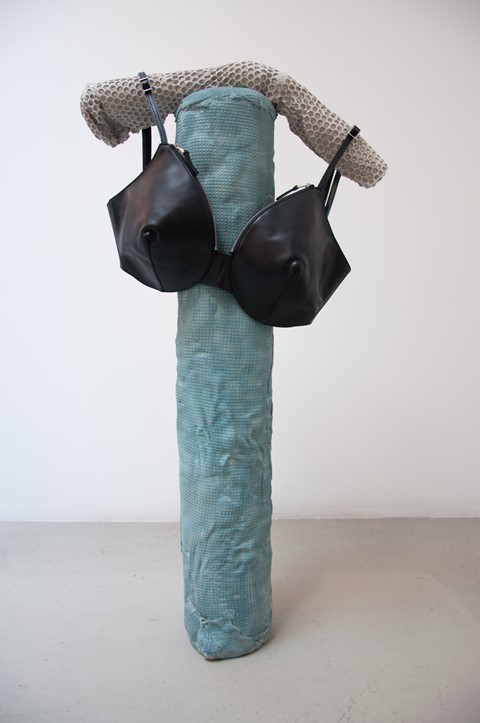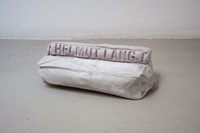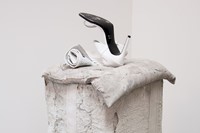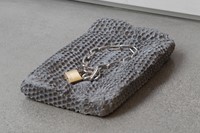Artist Rose Salane was commissioned by the fashion house to produce new works for its U.S. stores, inspired by pieces in Shayne Oliver’s latest collection
“I still remember very distinctly the first time I encountered Rose Salane’s work,” says Helmut Lang’s editor-in-residence Isabella Burley. “It was the summer of 2015 and she had a show called Who Isn't Seeing Someone? installed inside the tiny window of the Four A.M. gallery on Grand Street in New York. Among other objects in the space, there was a metallic blue leather flip flop installed in the window and I remember being so drawn to it.”
Producing notable collaborations with the likes of Jenny Holzer, Louise Bourgeois and Robert Mapplethorpe in the 1990s and 2000s, Helmut Lang is renowned for its storied relationship with conceptual artists. Since Burley began her tenure at the brand in 2017, she has made it one of her imperatives to renew this focus. Last year saw the launch of The Artist Series, through which archival imagery from artists such as Walter Pfeiffer and Keizo Kitajima was re-contextualised into a range of merchandise. For an entirely new project, Burley commissioned Salane to produce work for the Helmut Lang stores in New York and Los Angeles, utilising pieces from Helmut Lang Seen by Shayne Oliver for S/S18. Here, we speak with the artist herself about the process of making the work, and how Oliver and Lang’s design so inspired her.
On the initial inspiration for the sculptures...
“The sculptures commissioned by Helmut Lang, for Helmut Lang Seen by Shayne Oliver S/S18, were inspired by periods of activity which define significantly iconic moments in the respective histories of Shayne Oliver’s label Hood By Air, and the Helmut Lang runway shows of the late 1990s to early 2000s. I revisited video clips of Helmut Lang’s earlier design work, observing them in light of the recent runway documentation of Shayne’s new collection. I thought a lot about time, the realities of New York spanning 17 years, versus desires to escape current realities in 2017, the way in which clothing framed the body, the use of gender fluidity and sexuality within the brand, and the culturally inclusive diversity of models being artists, musicians and photographers.”
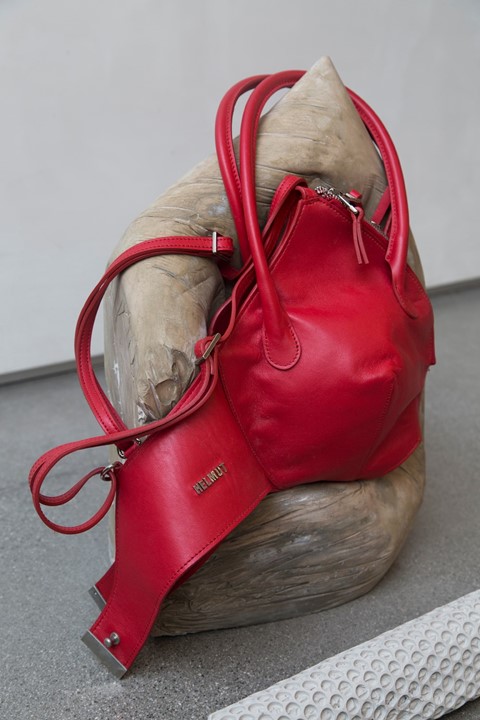
On Shayne Oliver’s vision for Helmut Lang...
“What Shayne managed to elegantly capture with S/S18 was a downright refusal to allow traditional gender binary thinking to infiltrate his creative process. We see transparent fabrics, leather, and tough materials coming together as see-through shirts and jacket-dresses that can be worn by gender-diverse bodies. I was interested in capturing this unisex quality within the sculptures. Playful accessories, such as harshly oversized leather bags, bra bags worn as clothing, or transparent briefcases, similarly subvert previous versions of these items that could narrowly implicate gender extremes in those who wear or carry them.”
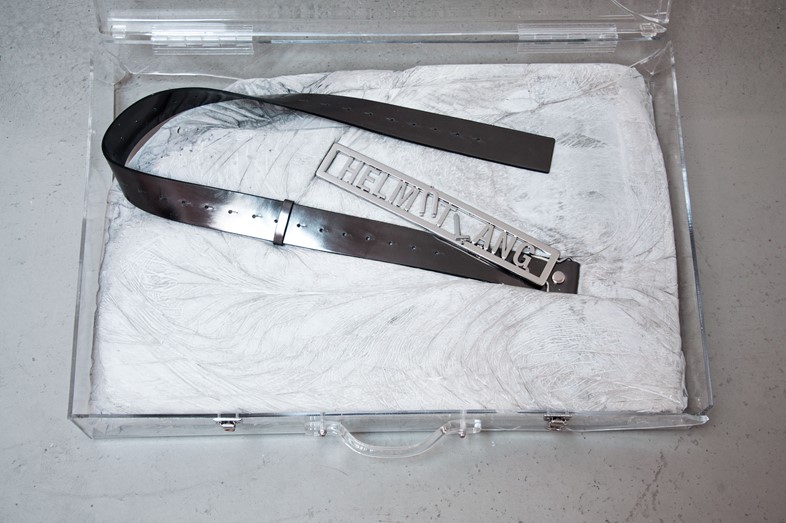
On the process of making...
“Considering all the pieces within Shayne’s line and previous works from the Helmut Lang archive, I made seven sculptures for the New York and Los Angeles stores. The works I’ve made are cast in concrete, having been poured into materials and found molds such as bubble wrap, cardboard, pillowcases, towels and other linens. Whichever material I happen to be using becomes temporary housing for the concrete, gets pushed into a desired place, then gets ripped off and separated as it dries. The materials leave their texture on the quick-setting concrete, allowing me to transfer their pattern identities onto a new surface. In response to the collisions of soft and hard materials appearing throughout Shayne’s line, I created concrete bases and structures to support single pieces such as the bra bags, the shoes with leg attachments, signature name belts and the chain necklaces.”
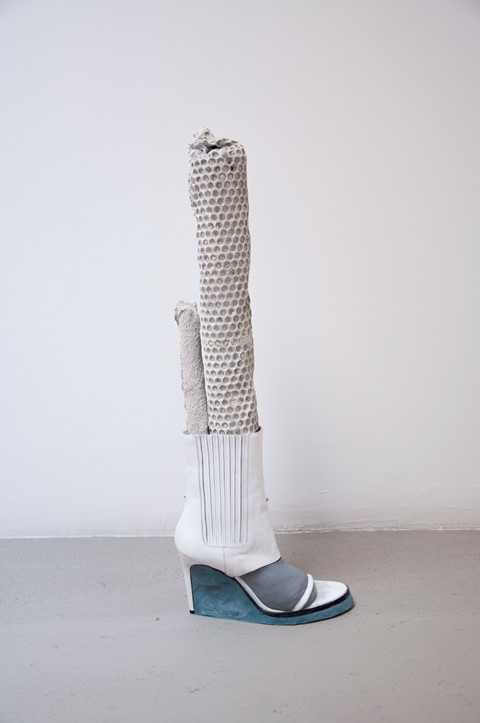
On artists collaborating with fashion houses...
“I think when designers and artists are invited to collaborate in the context of fashion, it becomes extremely important to allow the inevitable contemporaneity among many sources, subjects, and people to naturally cross-pollinate. It is really beautiful to look back and see I Smell You on My Skin, Jenny Holzer’s newspaper for Helmut Lang in 2000 or Louis Bourgeois’s text shirts. The discourse of history begins with collaboration. It just becomes more interesting and less segregated since everything is ultimately connected.”
